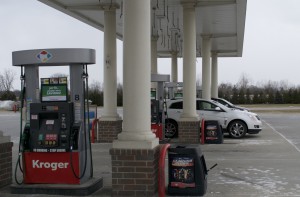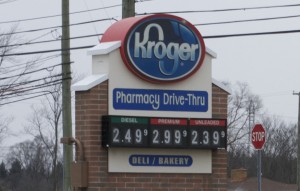Even as a second hurricane bears down on the U.S., the deadly weather from Hurricane Harvey has driven up the average price of gasoline to $2.66 per gallon — 28 cents higher than just a week ago, according to AAA.
Every state in the country has seen gas prices increase except four – Alaska, Idaho, Hawaii and Utah – where prices remain stable. Overall, gas prices are pennies away from topping the highest price of $2.67 that Americans have paid for a gallon of gas in more than two years.
Losses in U.S. supply capability have catapulted retail prices to their highest levels since August 2015, but remain well below the first weeks of September 2011 through 2014, AAA said.
The group noted that during the last two years Americans have seen inordinately cheap gasoline as the summer driving season ended after Labor Day weekend, and it expects this to be the case in October.
(Hurricane Harvey could drench U.S. motorists with higher gas prices. For the story, Click Here.)
Some 74% of U.S. gas stations are selling gas for $2.75 or less while only 7% are selling above $3 per gallon.

Gas prices are averaging $2.66 across the U.S., which is 28 cents per gallon higher than a week ago.
The Department of Energy is reporting that eight Gulf Coast refineries are in the process of restarting, which accounts for about 10% of Gulf Coast refining capabilities. At its peak, Harvey shuttered 27% of U.S. processing capacity.
No refineries have returned to normal rates, but at least four are operating at reduced rates.
(Click Here for more about the impact of Hurricane Harvey.)
Meanwhile, pipelines forced to take pre-cautionary shut downs caused by Harvey either have resumed operations or are in the process of coming back online. This includes the Colonial Pipeline, which currently has only suspended the Texas operations, while the remainder of the system continues to operate with available supply.
“News of refineries starting up is very promising, especially for areas that have felt tightened supply levels over the last 10 days, but we aren’t in the clear yet,” said AAA spokeswoman Jeanette Casselano. “Consumers will continue to feel pain at the pump stemming from Harvey with gas prices potentially increasing an additional five to 10 cents in the week ahead.
“States in the south, southeast and mid-Atlantic are most likely to see the biggest surges as these states receive the bulk of their supplies from the Gulf Coast. They could even see an additional surge if Hurricane Irma hits Florida this weekend. The good news consumers will see relief from the gas price spike towards the end of this month.”
(To see more about the White House releasing some of the strategic reserves, Click Here.)
As Texas dries out from Hurricane Harvey, a second powerful and unpredictable storm, Hurricane Irma, is surging out of Caribbean Sea towards the east coast of the U.S. However, the price of crude oil has remained stable after Harvey hit the Texas Coast.


To avoid the Big Oil gasoline price rip-off, plug your Tesla Model E, electric car into your household, solar array.